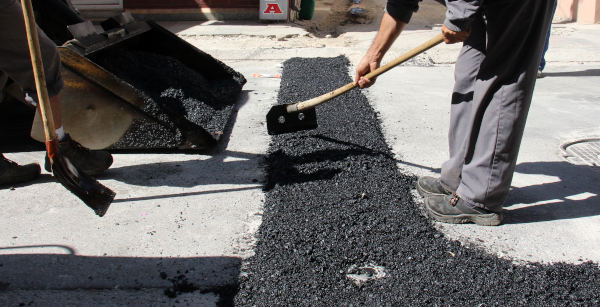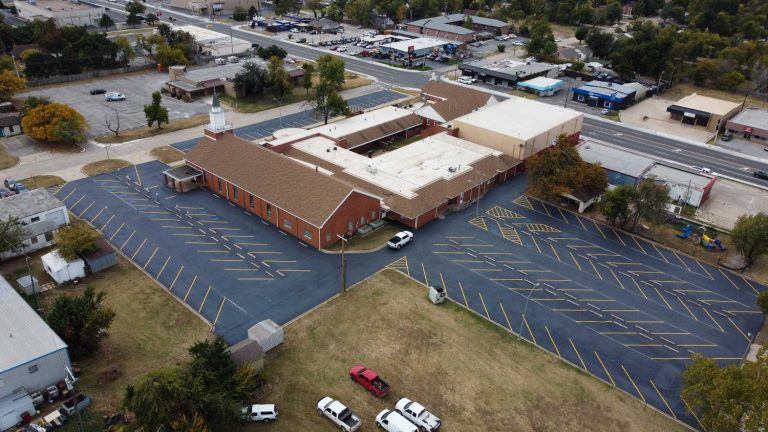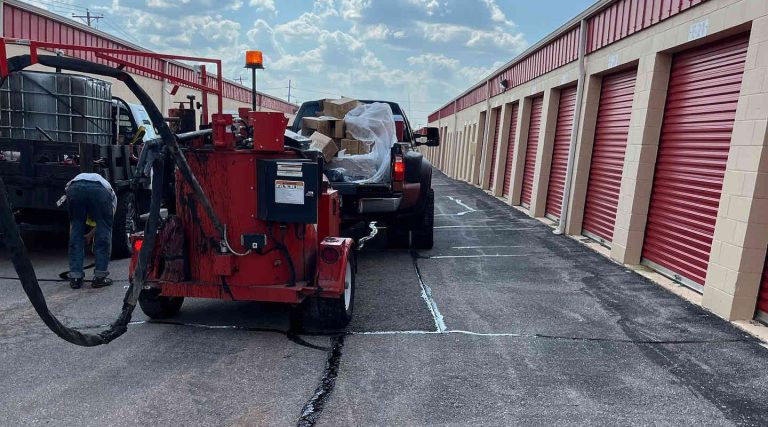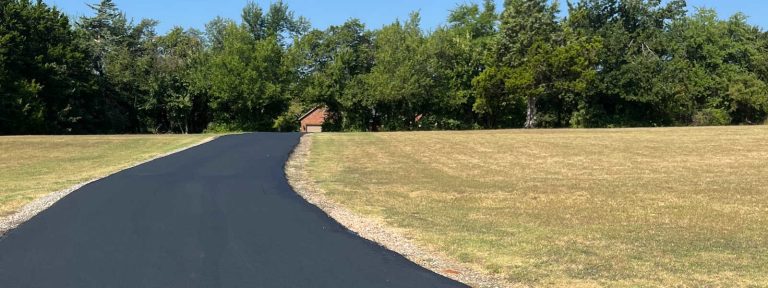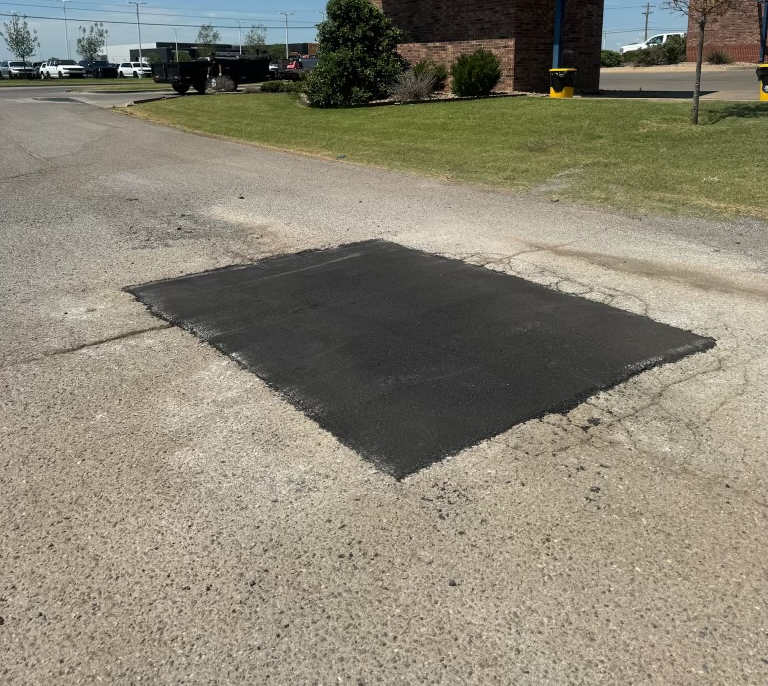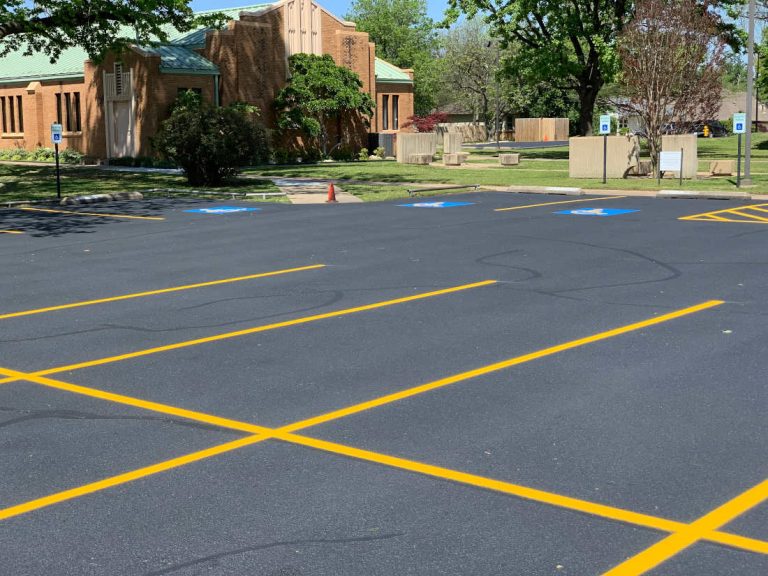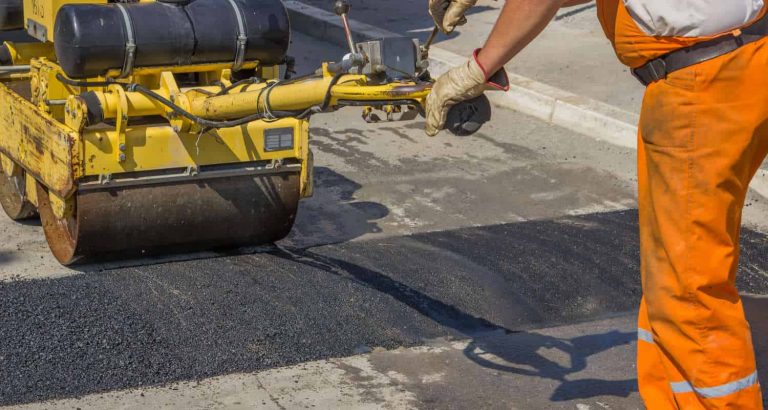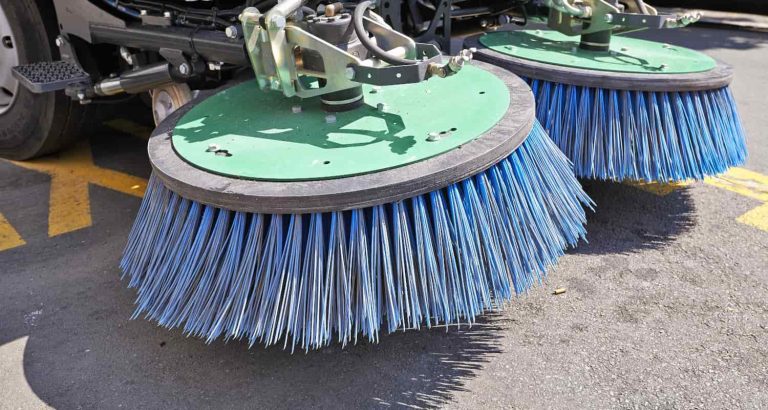Speed Bumps
Ensuring the safety of parking lots in Oklahoma City requires more than just painted lines and signage; it requires the strategic implementation of speed control measures. Speed bump installation is critical for commercial property owners, apartment complex managers, and business campuses to regulate vehicle speed and protect pedestrians and drivers. By incorporating well-designed speed bumps, you take a proactive step toward preventing accidents and enhancing the overall safety of your parking areas.
At PavementPro, we specialize in tailoring these safety solutions to meet your property's unique demands. Our commitment to customer service excellence means that we listen to your concerns and address them with high-quality, durable speed bump installations. We are a trusted partner in protecting Oklahoma City's parking lots, providing not just a product but a service that continuously contributes to the safety and well-being of your community.
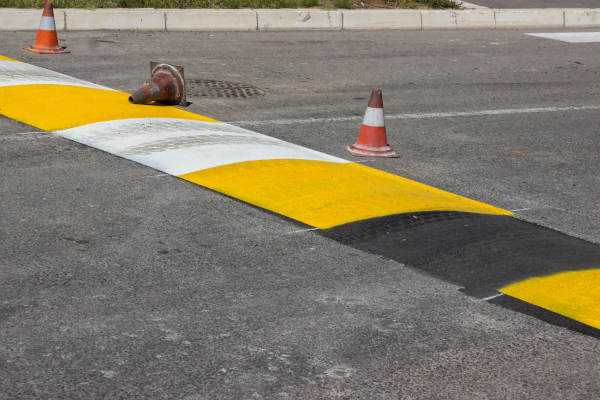
Call 918-640-0443 for a Free Estimate or
request a quote
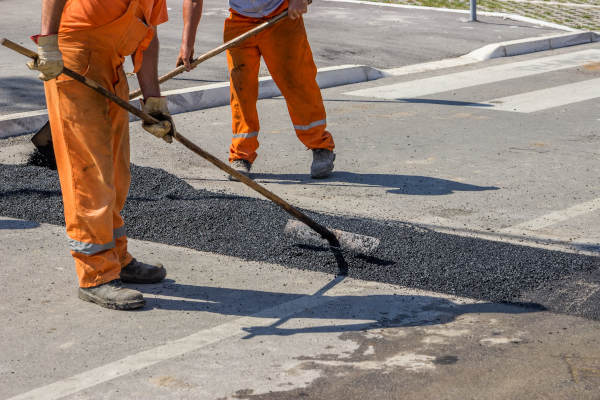
What Are the Different Kinds of Speed Bumps?
Speed bumps are a common parking lot feature designed to slow down vehicles in parking lots and private roads. Several types of speed bumps and related traffic-calming devices vary in size, design, and material. Here are some of the most commonly used:
Traditional Speed Bumps
These are the raised areas across the roadway or parking lot surface, typically about 3 to 4 inches high. They are abrupt and are effective at slowing down vehicles over a short distance. Speed bumps are mainly constructed from asphalt.
Speed Humps
Speed humps are wider than speed bumps and are designed to reduce vehicle speeds to around 15-20 mph. They are less aggressive than speed bumps and are often used in residential areas.
Preformed Rubber Speed Bumps
Made from recycled rubber, these are pre-made in a factory and can be installed on the pavement surface. They are removable and often have reflective markings for visibility.
Plastic Speed Bumps
Similar to rubber speed bumps but made from durable plastic materials. They are lightweight, easy to install, and often come in a variety of colors.
Each type of speed bump has its advantages and suitable applications depending on the environment they will be used in, the volume and type of traffic, and the desired speed reduction effect. PavementPro assesses your specific needs to recommend and install the most appropriate speed bumps for your parking lot, ensuring a balance between safety and traffic flow.
Call 918-640-0443 for a Free Estimate or
request a quote
How Are Asphalt Speed Bumps Installed?
Asphalt speed bumps are permanent traffic devices installed directly onto the pavement surface. Installing asphalt speed bumps involves several steps to ensure they are effective and durable. Here’s a general outline of the process:
- Site Assessment: Before installation begins, a thorough site assessment is necessary. This includes measuring the area, checking the condition of the pavement, and determining the optimal placement for effective traffic calming without impeding emergency vehicles or causing unnecessary inconvenience.
- Design and Planning: The dimensions of the speed bump (width, height, and length) are planned out according to local regulations and the specific needs of the parking lot. The design will also consider drainage and maintenance access.
- Marking the Area: The area where the speed bump will be installed is then marked out on the asphalt using chalk or paint. This serves as a guide during the construction process.
- Preparing the Asphalt: The asphalt where the speed bump will be installed is cleaned thoroughly to remove debris, oil, and any other material that might interfere with adhesion.
- Cutting the Asphalt (if required): In some cases, the area where the speed bump will be installed is cut to create a trench. This can provide a more secure installation, especially for larger speed bumps.
- Installing the Asphalt: The asphalt is poured onto the designated area and shaped to form the bump. This is typically done by hand with trowels, lutes, and other asphalt-handling tools. The asphalt is compacted as it’s shaped to ensure that it's dense and durable.
- Compaction: Once the bump is formed, a roller or plate compactor is used over the speed bump to ensure it is well-compacted and solidly in place. Proper compaction also helps to smooth out the surface and bind the new asphalt with the existing pavement.
- Finishing Touches: Once the asphalt speed bump has cooled and set, finishing touches like painting to enhance visibility, especially in low-light conditions.
As you consider the safety and efficiency of your parking lot in Oklahoma City, remember that well-placed speed bumps are more than just asphalt protrusions—they are a commitment to the well-being of those who drive and walk on your premises. With PavementPro, you're choosing a partner that values the integrity of your property and the safety of your community.
Are you ready to take the next step towards a safer parking lot? Connect with us today for a comprehensive assessment and a free estimate. Our skilled team is ready to guide you through the options that best suit your needs, providing professional advice and top-tier installation services. Don't let concerns about speed and safety in your parking area go unaddressed.
